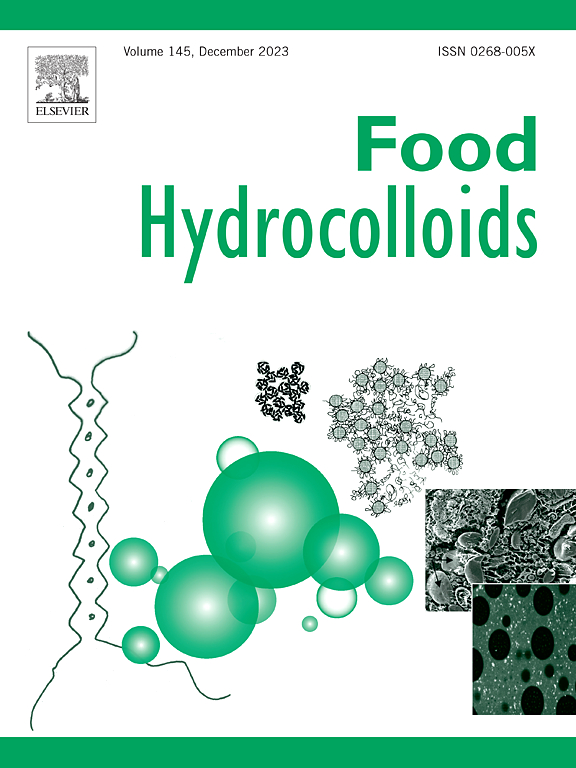Self-assembling wheat gluten peptide nanoparticles: Pterostilbene encapsulation and interaction mechanism
IF 11
1区 农林科学
Q1 CHEMISTRY, APPLIED
引用次数: 0
Abstract
In this study, the wheat gluten protein peptide WGP-M (3697.86 Da) was used as a carrier to successfully prepare pterostilbene (PTE) composite nanoparticles (WGPM-PTE), and the self-assembly mechanism and structural characteristics were thoroughly investigated. The composite nanoparticles were systematically characterized using HPLC, SEM, SAXS, XRD, FTIR, and DLS. WGPM-PTE exhibited an excellent encapsulation efficiency of 90.89% and solubility of 113.56%. SEM images revealed that WGPM-PTE had a dense gel-like network structure with a smooth surface, while SAXS confirmed its highly ordered and stable internal structure, showing a minimum radius of gyration (3.16 nm) and maximum rigidity. XRD analysis revealed that the crystalline peaks of PTE in WGPM-PTE disappeared completely, indicating an amorphous state. Furthermore, FTIR spectra, fluorescence spectra, and thermodynamic parameter analysis revealed that WGP-M and PTE primarily formed stable non-covalent interactions through hydrogen bonding, van der Waals forces, hydrophobic interactions, and electrostatic forces. Molecular dynamics simulations showed that PTE was encapsulated in the hydrophobic core of WGP-M. In conclusion, this study elucidates the interaction mechanism by which the self-assembly capacity of WGP-M facilitates the loading of PTE, offering new insights for the development of novel food-derived peptide-based nanoparticle carriers with significant potential for practical applications.

求助全文
约1分钟内获得全文
求助全文
来源期刊

Food Hydrocolloids
工程技术-食品科技
CiteScore
19.90
自引率
14.00%
发文量
871
审稿时长
37 days
期刊介绍:
Food Hydrocolloids publishes original and innovative research focused on the characterization, functional properties, and applications of hydrocolloid materials used in food products. These hydrocolloids, defined as polysaccharides and proteins of commercial importance, are added to control aspects such as texture, stability, rheology, and sensory properties. The research's primary emphasis should be on the hydrocolloids themselves, with thorough descriptions of their source, nature, and physicochemical characteristics. Manuscripts are expected to clearly outline specific aims and objectives, include a fundamental discussion of research findings at the molecular level, and address the significance of the results. Studies on hydrocolloids in complex formulations should concentrate on their overall properties and mechanisms of action, while simple formulation development studies may not be considered for publication.
The main areas of interest are:
-Chemical and physicochemical characterisation
Thermal properties including glass transitions and conformational changes-
Rheological properties including viscosity, viscoelastic properties and gelation behaviour-
The influence on organoleptic properties-
Interfacial properties including stabilisation of dispersions, emulsions and foams-
Film forming properties with application to edible films and active packaging-
Encapsulation and controlled release of active compounds-
The influence on health including their role as dietary fibre-
Manipulation of hydrocolloid structure and functionality through chemical, biochemical and physical processes-
New hydrocolloids and hydrocolloid sources of commercial potential.
The Journal also publishes Review articles that provide an overview of the latest developments in topics of specific interest to researchers in this field of activity.
 求助内容:
求助内容: 应助结果提醒方式:
应助结果提醒方式:


